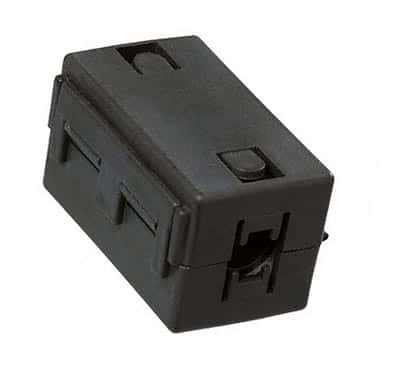Electromagnetic interference, abbreviated EMI, is the interference caused by an electromagnetic disturbance affecting the performance of a device, transmission channel, or system. It is also called radio frequency interference, or RFI, when the interference is in the radio frequency spectrum.
All of us encounter EMI in our everyday life. Common examples are:
• Disturbance in the audio/video signals on radio/TV due an aircraft flying at a low altitude
• Noise on microphones from a cell phone handshaking with communication tower to process a call
• A welding machine or a kitchen mixer/grinder generating undesired noise on the radio
• In flights, particularly while taking off or landing, we are required to switch off cell phones since the EMI from an active cell phone interferes with the navigation signals.
EMI is of two types, conducted – in which there is physical contact between the source and the affected circuits, and radiated – which is caused by induction.
The EMI source experiences rapidly changing electrical currents, and may be natural such as lightning, solar flares, or man-made such as switching off or on of heavy electrical loads like motors, lifts, etc. EMI may interrupt, obstruct, or otherwise cause an appliance to under-perform or even sustain damages.
In radio astronomy parlance, EMI is termed radio-frequency interference (RFI), and is a signal within the observed frequency band emanating from other than celestial sources themselves. In radio astronomy, RFI level being much larger than the intended signal, is a major impediment.
Susceptibility to EMI and Mitigation
Analog amplitude modulation or other older, traditional technologies are incapable of differentiating between desired and undesired signals, and hence are more susceptible to in-band EMI. Recent technologies like Wi-Fi are more robust, using error correcting technologies to minimize the impact of EMI.
All integrated circuits are a potential source of EMI, but assume significance only in conjunction with physically larger components such as printed circuit boards, heat sinks, connecting cables, etc. Mitigation techniques include the use of surge arresters or transzorbs (transient absorbers), decoupling capacitors, etc.
Spread-spectrum and frequency-hopping techniques help both analog and digital communication systems to combat EMI. Other solutions like diversity, directional antennae, etc., enable selective reception of the desired signal. Shielding with RF gaskets or conductive copper tapes is often a last option on account of added cost.
RFI detection with software is a modern method to handle in-band RFI. It can detect the interfering signals in time, frequency or time-frequency domains, and ensures that these signals are eliminated from further analysis of the observed data. This technique is useful for radio astronomy studies, but not so effective for EMI from most man-made sources.
EMI is sometimes put to useful purposes as well, such as for modern warfare, where EMI is deliberately generated to cause jamming of enemy radio networks to disable them for strategic advantages.
Regulations to contain EMI
The International Special Committee on Radio Interference (CISPR) created global standards covering recommended emission and immunity limits. These standards led to other regional and national standards such as European Norms (EN). Despite additional costs incurred in some cases to give electronic systems an agreed level of immunity, conforming to these regulations enhances their perceived quality for most applications in the present day environment.

